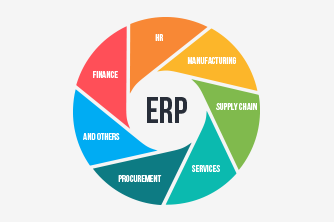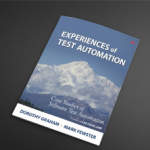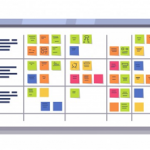Understanding the benefits and challenges of Automating ERP is critical.
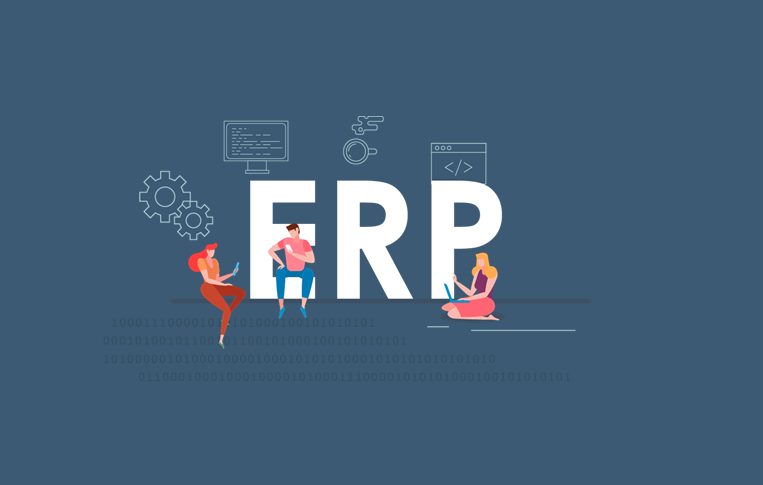
According to SAP, ERP (Enterprise Resource Planning) “is the core processes that are needed to run a company: finance, human resources, manufacturing, supply chain, services, procurement, and others. At its most basic level, ERP integrates these processes into a single system. But new ERP systems are anything but basic. They provide intelligence, visibility analytics, and efficiency across every aspect of a business. Using the latest technologies, ERP systems facilitate the flow of real-time information across departments and ecosystems so businesses can make data-driven decisions and manage performance – live.”
An ERP system is typically made up of modules that talk to each other and share a database. This means, in the words of SAP, “that you can eliminate information silos between departments and give everyone a single source of truth. Your system can automate your core business processes and help you ensure regulatory compliance, reduce risk, fast-track reporting–and so much more.” (SAP)
These are ERP Software Leaders:
- Oracle E-Business Suite
- Microsoft Dynamics 365
- SAP Business
The Benefits of ERP
ERP helps users manage global business, reduce time, costs & resources, and increase the business processes’ effectiveness. ERP systems are able to cover a wide range of universal processes. This ability to cover everything makes it an attractive option for businesses that are looking to trim their operations costs.
As a result, the market for ERP is exploding. The Software Testing Help blog states “the world ERP Software market per year is more than $25 billion [and growing rapidly] at 10-20% every year, and the demand will increase as small and medium enterprise business segments start to adopt through SaaS (Software-as-a-Service) and Cloud platforms.”

Why Testing for ERP is Critical
The customisation that goes along with an ERP system, plus the amount of complex business functionality involved , can make testing ERP systems a challenge of strategic importance. ERP is not just software—it is a business process. It needs a dedicated workforce to maintain and test it. Given the business orientation of most of ERP tests along with the repetitive reruns of tests necessary when there are new releases, testing can benefit greatly from maintenance friendly Automation.
Challenges of Testing ERP
The biggest hurdle to overcome when adopting ERP in a business is the need to implement and verify implementations. Software Testing Help points out that “without testing each and every component of a system, and ensuring 100% quality ERP implementations fail. Many ERP implementation projects spent more than 50% of their budget in testing and related activities.”
Adopting Test Automation can have varying degrees of success when done in-house. Finding a champion in-house can be hard—according to the Test Automation survey by LogiGear Corporation, nearly 34% of respondents when asked said they “partially” had the technical skills to build and maintain Test Automation, while another 10% said no, they did not have the technical skills.
To further elaborate, when asked what would prevent them from automating more tests, 34% of respondents stated “not enough technical skill to build more successful automation” closely followed by 32% of respondents stating that “investment in Automation program (training, staff, tool maintenance) is too high.” One other reason often cited was “Management does not understand what it takes to successfully automate.”
According to the Test Automation survey, when asked if they’ve tried Automation programs in the past and failed survey respondents replied:
- 19% – Yes, we did it successfully the first time
- 38% – Yes, we tried and it failed, but now we have a successful automation program
- 25% – Yes, we tried it, it failed. We tried again, but it was still not effective
- 9% – Yes, we tried. It failed and we stopped
- 9% – We have never tried automation
With over one third of respondents stating that they have failed at Automation, it can be prudent to look for an outside vendor that specializes in software testing if you’re looking to automate your ERP system.
The benefits of going with a vendor are numerous and include the following:
- Elasticity in test staff
- Solving the inability to find enough staff for the home office
- Lowering staffing costs
- Gaining access to technical skills not available in the home office
- Gaining access to testing skills not available in the home office
An impressive statistic, from the Modern Distributed Test Teams survey, is when asked if “outsourcing/offshoring was successful or effective.” An overwhelming 77% of respondents replied Yes. Surprisingly, this group of respondents had also cited length of the engagement as being long-term; 27% of respondents replied the engagement had been 5-10 years and 39% replied 1-3 years. Showing that when the right partner is selected it can prove to be a fruitful long-term engagement for both parties.
DevOps presents its Own Obstacles:

The second biggest challenge for test teams is that more businesses look to transition to DevOps with Legacy ERP systems.
According to Michael Hackett, “For Everyone, DevOps is an automatic leveraging technology, in which everyone’s tasks are automated. From builds, to provisioning, to deployment, and everything in between—it’s all automatic. The goal for Test Teams [in DevOps] is to automate as effectively, thoroughly, and economically as possible.”
DevOps makes stable Test Automation a necessity- not a want. It is also commonly acknowledged that a majority of companies with ERP systems are still employing mainly manual testing, not fitting a DevOps philosophy.
Given the lack of technical expertise in teams, it becomes prudent to look for outside testing firms that specialise in testing automation and ERP.
These firms can provide much needed subject matter expertise in Test Automation, as well as provide support for the in-house team with taking the bulk of functional testing on the system, freeing them up to focus on more critical areas of the application.
Test Automation for Oracle E-Business Suite™
Known as one of the leading ERP Vendors in the market, Oracle E-Business Suite (Oracle EBS) provides an ERP solution with hundreds of cross-industry capabilities across several departments: from finance, to CRM, to human resources, to supply chain management, making it the life-blood of a business’ core operations.
Oracle has a market share of more than 13% in 2017, and is one of top five leaders in the market, according to ERP News.
As mentioned in the paragraph above, applying Test Automation for Oracle EBS in your ERP system is critical for the following reasons:
- Oracle EBS is a modular software with the ability to be customise-able. This customisation can be based on the customers’ industry, or their core values and requirements.
- To meet with changes in the businesses’ strategy due to keeping up with market demands. These changes will impact the business flow in the ERP system.
- As the use of the system grows, so does the data. Transactional data across the system is very large and increases daily.
All of these factors contribute to making for a complex testing situation, this is further compounded as Oracle is now applying the “Continuous Delivery” model of releases for Oracle E-Business Suite™. They are now releasing monthly updates to allow companies to take advantage of new features and improvements. Due to the amount of work in testing the system, it’s commonly known that companies who were originally having problems keeping up with the quarterly release cycle are challenged even more now.
In order for companies to keep the pace with Oracle’s release cycle, also known as “staying code current”, whilst avoiding technical debt, having a solid Test Automation process in place is important. However, many Test Automation tools on the market, including both open source and proprietary ones are not particularly well equipped to handle the complex business nature of ERP testing.
Here are the top challenges of Oracle Application testing:
- The complexity of Oracle Applications is immense, in particular from a business functionality point of view.
- Repetitive manual testing is time consuming and inefficient. Continuously staying code current is hard without Test Automation.
Test Automation Tools comparison for Oracle E-Business Suite™
When choosing a Test Automation tool for testing Oracle E-Business Suite™ the following are the top considerations:
- The automation tool needs to have native support for Oracle Forms for robust GUI controls recognition. Not having that will make keeping tests up to date across releases hard to do.
- It should not rely on scripting; this would make it necessary to design and maintain a software architecture to be successful in the long run, which can be a problem if a team doesn’t have a lot of programming experience.
There is a limited set of Test Automation tools in the market which provide support for Oracle Forms, among them:
- HP Unified Functional Testing™ (aka UFT)
- Oracle Application Testing Suite™ (aka OATS)
- TestArchitect™
HP Unified Functional Testing: HP UFT™

HP UFT is based on the former Mercury’s Quick Test Pro. After HP acquired Mercury, it became UFT.
UFT is known as a powerful Automation tool that supports a multitude of applications and platforms via its add-ins. It is an easy tool for teams without a programming background to use and has good object identification mechanism to help users identify graphical components.
Key features include:
- Business Process Testing (if used in combination with HP ALM)
- Data Driven Testing
- “Bulky” Tests
One of the main factors of purchasing HP UFT for testing ERP is its ability to accommodate “Business Process Testing” (BPT). BPT helps non-technical team members without a programming background to create automated tests with little need for scripting. In order to use BPT, UFT needs to be combined with HP ALM and the BPT module.
As expected with most enterprise solutions, this tool has high licensing costs; the extra cost of the add-in for HP QC ALM may be a financial investment that not all firms are willing to make.
Oracle Application Testing Suite™:
Oracle Application Testing Suite (OATS) is the proprietary tool owned and created by Oracle. It covers Functional Testing, Load Testing, and Test Management. As expected, OATS is a suitable option for Oracle products when it comes to Test Automation needs.
Key features include:
- Provides custom accelerators for Oracle EBS
- Provides keyword driven testing framework
- Integrated scripting platform for both functional and load testing
- Flexible scripting extensibility
One of the main factors of purchasing OATS is Oracle Flow Builder (OFB). OFB is a keyword-driven testing application that supports the user in creating business flows that are converted to test scripts that are executed automatically. OFB contains 2100+ components and 200+ flows that contain most common business components and flows for automation; it saves the user time when designing and scripting.
A downside of OATS might be that its capability is to support Oracle products, making it limited to testing Oracle-based and web-based applications.
It should also be noted that in order to use OFB a separate license must be purchased.
LogiGear’s TestArchitect™:
TestArchitect is an integrated test development and Automation platform that focuses on scaling up Automation coverage and productivity by leveraging a smaller programming staff to support a much larger non-programming staff.
The key benefit of TestArchitect for ERP, however, (what sets it apart from all others) is its ability to support business-level test development and Automation.
Key features include:
- Providing native Automation support for Oracle Applications and Oracle Forms
- Utilising the “Action Based Testing” method
- Intuitive Test IDE to build modular and reusable test assets
- Parallel test execution
- Easy to analyse test reports with automatic screenshot recording
- Variation handling: one set of tests can run on all platforms and on all versions of an application, eliminating the need for test creations for each platform
- Easy to integrate within the CD tool chain. Integrations for leading tools like, Selenium WebDriver, MS Visual Studio/TFS/Test Manager, Quality Center, JIRA, Zephyr, and Jenkins
A major consideration in purchasing TestArchitect is Action Based Testing™ (ABT). ABT is a modular approach that uses keywords to create and automate the majority of tests without scripting. TestArchitect comes with 400+ pre-programmed actions that can allow users to easily start creating tests with minimal programming support.
This helps business testers create, execute, and manage modular tests. Another key feature is that the re-usability of actions and these tests allow for easy scalability. Any changes to the AUT are easily unaffected by ABT. Unlike OATS and HP QTP, there isn’t an extra cost associated with ABT.
How to Automate ERP using TestArchitect
This approach uses TestArchitect to automate Oracle E-Business Suite. This demonstration shows how TestArchitect can be used to automate Oracle EBS (starting at the 1:36 mark):
For more an-in depth look… let’s examine the following screen captures:

The screen capture above is a test module of TestArchitect. As mentioned, TestArchitect provides native support for automation of Oracle Forms. In TestArchitect, Test Modules are made of user-defined application-level actions which are typically designed by Business Testers.
In this test module, you can see a clear and well-differentiated scope from every other test module to avoid redundant activities and checks. This makes tests less fragile and easier to maintain for enterprise-level Test Automation.
Creating GUI Objects Mapping
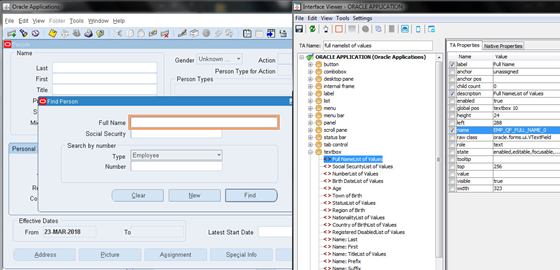
TestArchitect’s Interface Viewer allows testers to inspect GUI Controls and create interface mappings whilst storing them in a shared repository. Each item in the interface mapping has a unique logical name (an action) that allows you to update the mapping only once when the particular element changes. These user-defined actions can be created by combining built-in actions and other user-defined actions.
Testers use these user-defined actions to build application-specific workflows to make higher level workflows. Then, in turn, these application-specific actions serve as the building blocks to build business tests.
When these tests change, testers only need to update a small number of actions, in most cases without having to update tests. As a result, a small increase in the number of actions provides a vast growth in the number of tests.
This helps business testers create, execute, and manage modular tests ultimately eliminating weeks of coding, thereby allowing the team to keep up with the rapid release cycle and stay code-current.
LogiGear’s Perspective
If you’re ready to start automating your ERP for Continuous Delivery, then consider talking with us. We specialize in Test Automation services and we’ll make Automation become your business competitive advantage. Our Test Automation solution and tool, TestArchitect, was built for both automating Oracle E-Business Suite and integrating within the Continuous Delivery Tool Chain. We can help you with your Automation implementation and help you accelerate your testing cycles to take advantage of both your ERP system and Continuous Delivery.
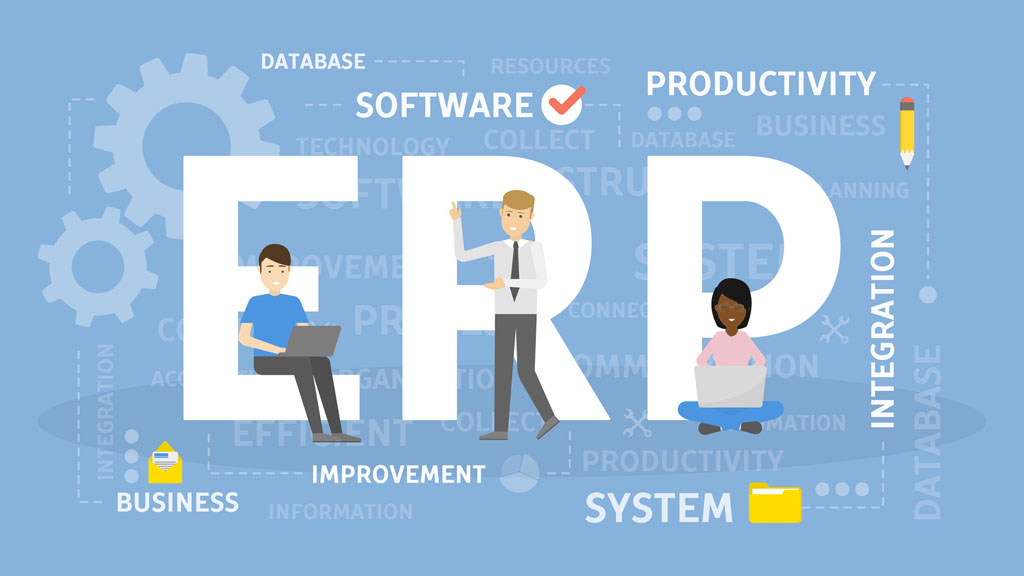
References:
https://www.sap.com/products/what-is-erp.html
https://www.softwaretestinghelp.com/guide-erp-testing-sap-testing-1/
http://www.erpnews.com/downloads/Top-10-ERP-Systems-Report-2017.pdf
https://magazine.logigear.com/continuous-delivery-and-devops/continuous-testing-part-1/
https://magazine.logigear.com/survey/survey-results-test-automation/
https://magazine.logigear.com/survey/survey-results-modern-distributed-test-teams/
Disclaimer: This article is not endorsed by, directly affiliated with, maintained, authorized, or sponsored by HP, or Oracle. All product and company names are the registered trademarks of their original owners. The use of any trade name or trademark is for identification and reference purposes only and does not imply any association with the trademark holder of their product brand.


